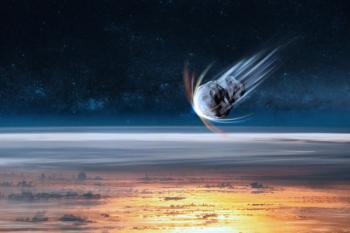
Introduction to Satellite and Aerial Spectral Imaging Systems
Modern remote sensing technologies have evolved from coarse-resolution multispectral sensors like MODIS and MERIS to high-resolution, multi-band systems such as Sentinel-2 MSI, Landsat OLI, and UAV-mounted spectrometers. These advancements provide greater spectral and spatial detail, enabling precise monitoring of environmental, agricultural, and land-use dynamics.
There are many articles recently published that refer to satellite and aerial spectral imaging systems by name, possibly assuming that the readers are familiar with the spectroscopic technical aspects of these systems. However, the laboratory and process-focused spectroscopist does not typically have such information at their fingertips. Thus, this brief article summarizes the technical details of these remote sensing systems (1–8).
The Development of Remote Sensing Technology
Over the past two decades, the field of remote sensing has undergone a remarkable transformation. Satellite-borne and unmanned aerial vehicle (UAV) imaging systems have evolved from coarse, multispectral platforms into highly sophisticated, high-resolution spectral instruments. This technological progression has been pivotal in fields such as climate monitoring, agriculture, environmental management, and land use classification. The sensors at the forefront of this evolution include NASA’s MODIS, ESA’s MERIS and Sentinel-2 MSI, NOAA’s VIIRS, and the USGS/NASA Landsat OLI instruments—each representing a step forward in spectral and spatial resolution. Complementing these are UAV-mounted sensors, which provide flexible, ultra-high-resolution data acquisition capabilities (Table I) (1–8).
Overview of Key Imaging Systems
The following are the major current Earth-imaging satellites used for analysis of Earth’s chemistry and weather conditions.
MODIS (Moderate Resolution Imaging Spectroradiometer), operated by NASA, covers a wide spectral range from 0.4 to 14.4 µm across 36 spectral bands. With spatial resolutions of 250 m to 1 km, depending on the band, MODIS is designed for large-scale environmental and atmospheric monitoring (1).
MERIS (Medium Resolution Imaging Spectrometer), developed by ESA, operates from 0.39 to 1.04 µm in the visible and near-infrared (VNIR) region, utilizing 15 programmable spectral bands. It offers spatial resolutions of 300 m (full) and 1200 m (reduced), making it suitable for ocean color and terrestrial studies (2).
VIIRS (Visible Infrared Imaging Radiometer Suite) spans 0.41 to 12.5 µm and includes 22 bands. It captures moderate (750 m) and high-resolution (375 m) data used in weather, climate, and environmental assessments (3).
Sentinel-2 MSI and Landsat 8/9 OLI represent the current state-of-the-art in publicly accessible satellite imaging. Sentinel-2's MSI provides 13 bands ranging from 0.443 to 2.19 µm with spatial resolutions between 10 and 60 m (ESA Sentinel-2). Landsat OLI captures nine multispectral bands and two thermal bands with a 30 m spatial resolution (4,5).
UAV-based sensors, such as those offered by Headwall Photonics, are capable of collecting data across dozens to hundreds of narrow spectral bands, often in the VNIR and SWIR regions. They are now essential in precision agriculture, forestry, and conservation, with spatial resolutions below 1 meter (6,7).
IKONOS was the world’s first commercial high-resolution Earth observation satellite, launched in 1999 by GeoEye (now Maxar Technologies). It captured imagery in four multispectral bands (blue, green, red, near-infrared) at 4-meter resolution, and one panchromatic band at 1-meter resolution, covering the 0.45–0.90 µm range. IKONOS has had applications in urban planning, precision agriculture, defense, and environmental monitoring by offering unprecedented detail to non-governmental users (8).
These systems exemplify the convergence of broad spectral range, fine spatial resolution, and specialized applications, driving the field toward greater data richness and decision-making power.
Table I: Modern satellite and aerial spectral imaging systems
References:
(1) NASA. MODIS Overview. Available at:
(2) European Space Agency (ESA). MERIS Instrument Overview. Available at:
(3) NOAA/NESDIS. Visible Infrared Imaging Radiometer Suite (VIIRS). Available at:
(4) European Space Agency (ESA). Sentinel-2 Mission Overview. Available at:
(5) U.S. Geological Survey (USGS). Landsat Missions. Available at:
(6) Headwall Photonics. Hyperspectral Imaging Sensors. Available at:
(7) SPIE Digital Library. Journal of Applied Remote Sensing. Available at:
(8) European Space Agency, IKONOS Satellite. Available at:
Newsletter
Get essential updates on the latest spectroscopy technologies, regulatory standards, and best practices—subscribe today to Spectroscopy.





